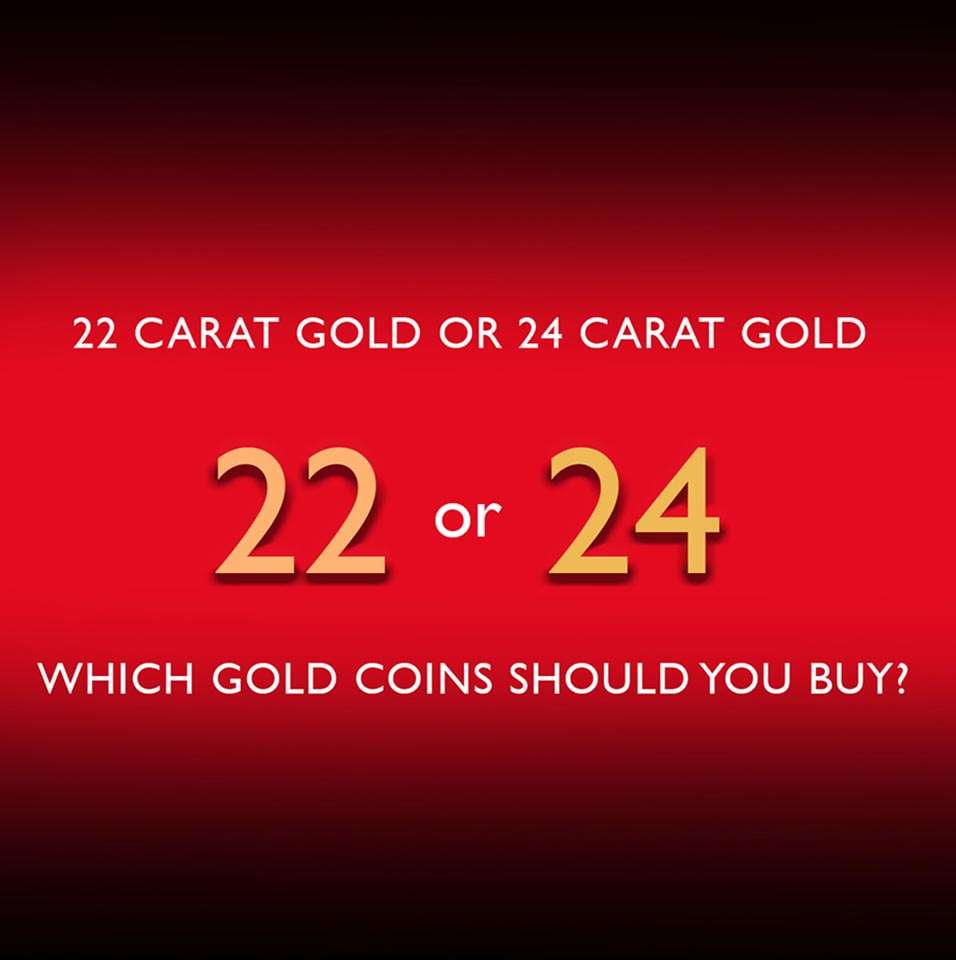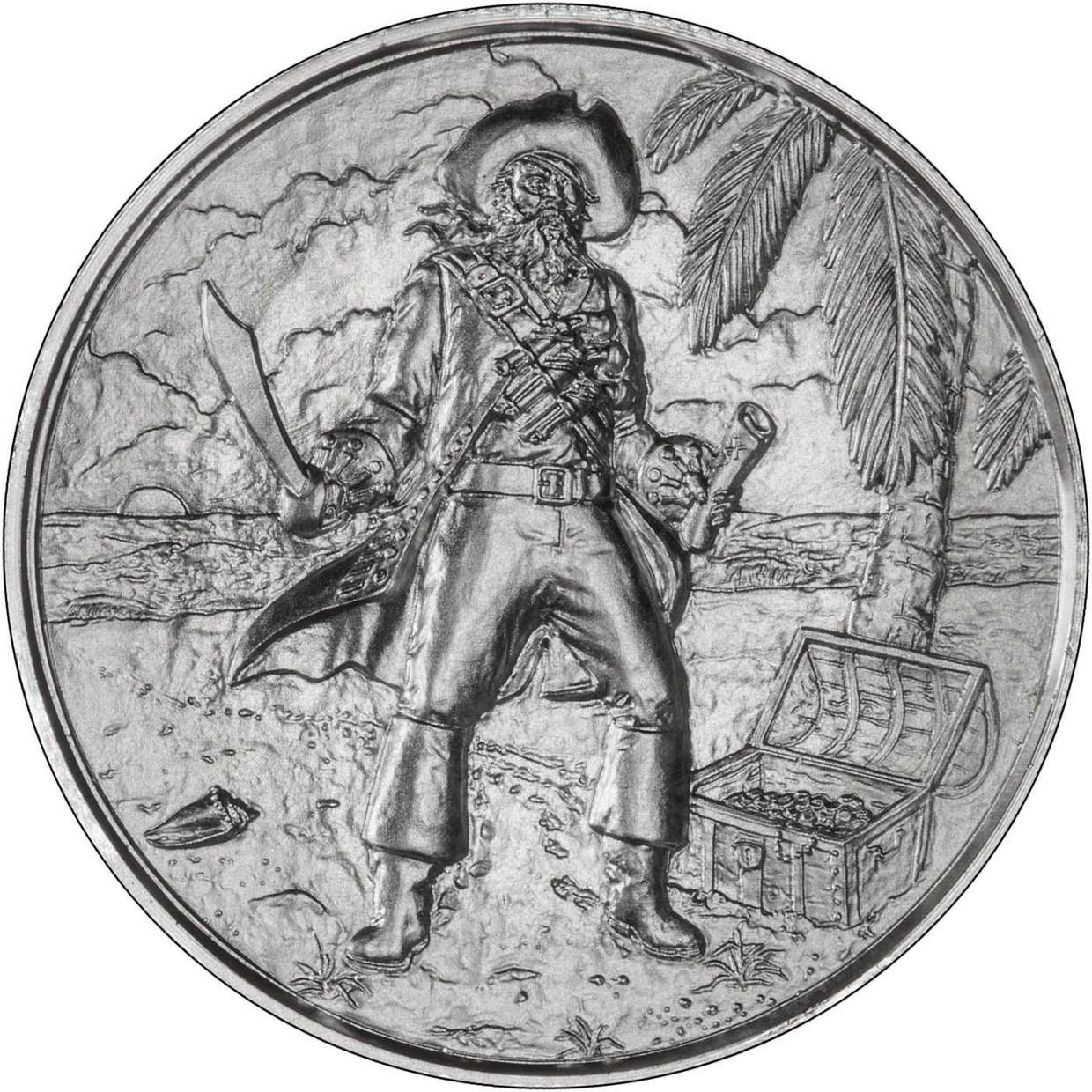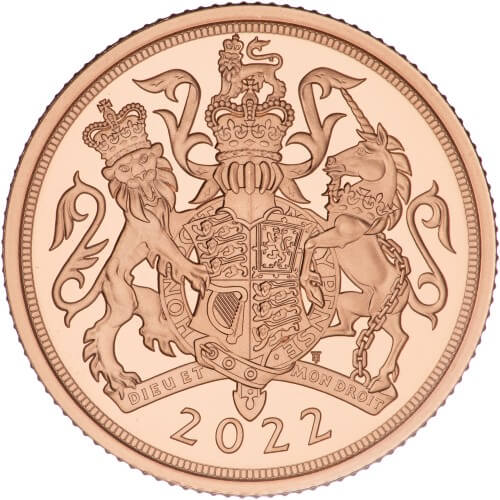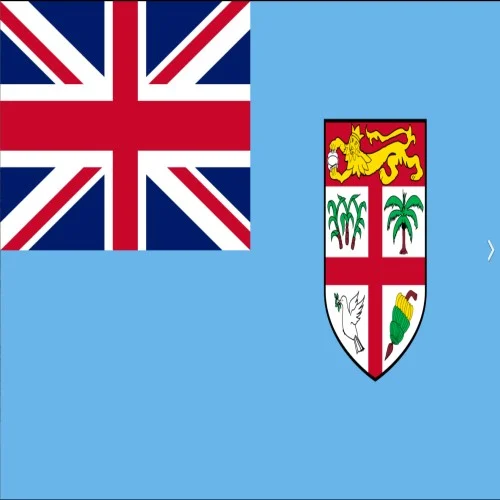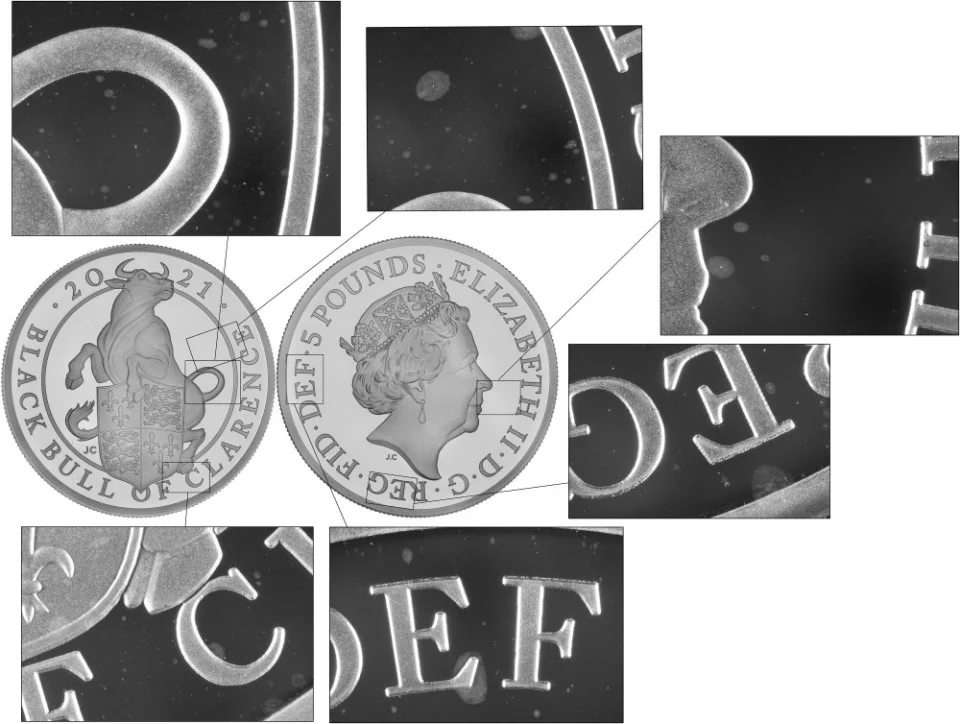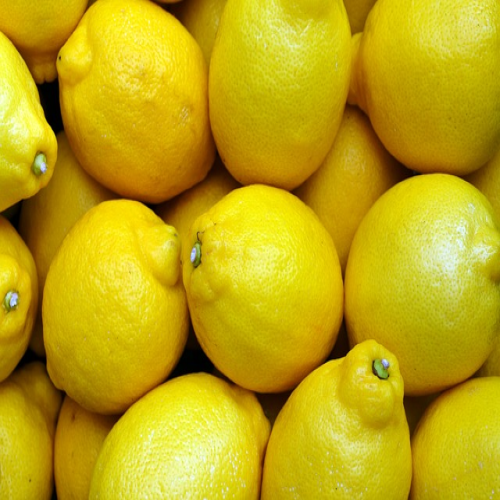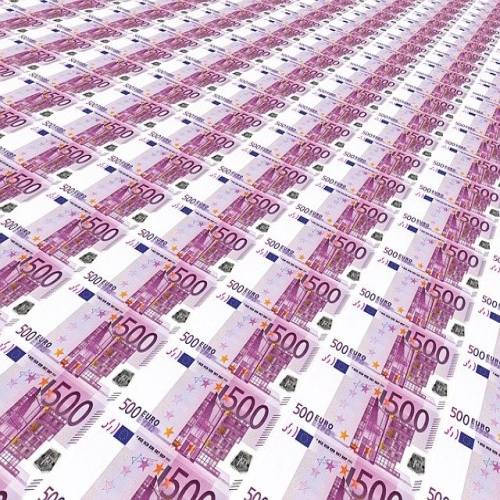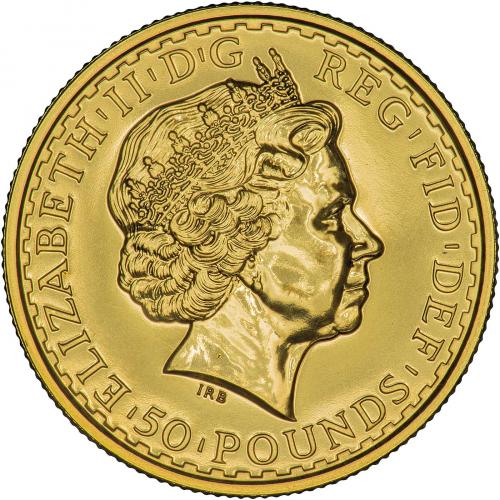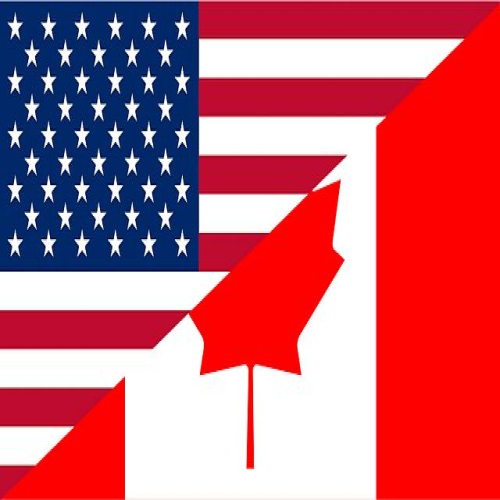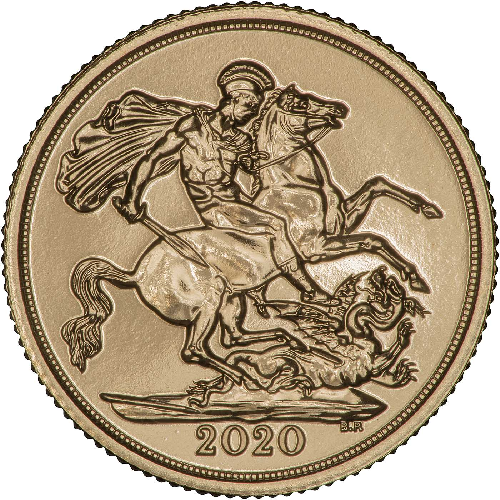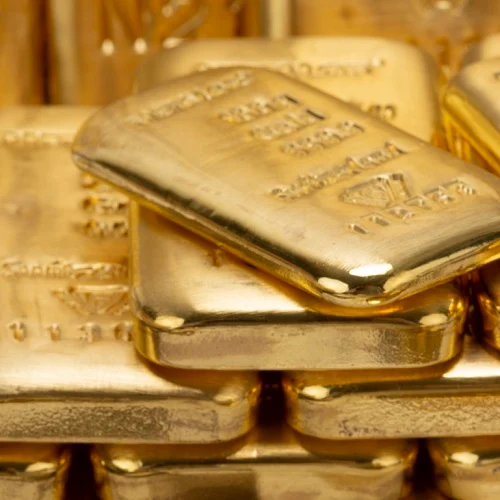Red Spots on Gold Coins
Synopsis
'Red Spot' sounds like a plant disease you would hear about on a gardening programme, but apparently it is a phenomenon well known to all of the world's mints.
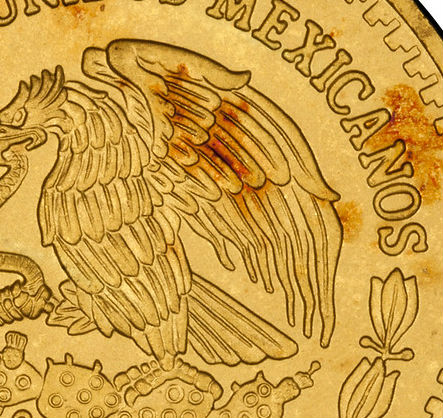
Is Red Spot Bad?
Quite honestly it's not something that we tend to think of as bad. We believe that the existence of detail, and lack of wear is more important than an amount of colour change, but we are all different. An individual is entitled to dislike red spot appearing on their gold coins, and to reject coins, other than pure bullion coins, which exhibit evidence of red spot.
What Causes Red Spots?
Red spot can occur on almost any gold coin, it certainly happens on 22 carat gold coins. We have seldom seen it on .999(9) fine gold coins, and presume it is virtually impossible for it to occur on actual fine gold (1.000/1.000).
From our knowledge of metallurgy, we can tell you that when gold is alloyed, usually with copper or copper and silver, the alloying is obviously done in the molten state, and then has to cool. During cooling, crystalisation occurs, the crystal forming around 'seeds' which are molecules of the elemental metals. There is a slight tendency for the elements with the highest melting point to start to crystalise first, and this can lead to small localised areas with slightly higher or lower concentrations of the constituent elements. In ternary alloys (three elements) three pairs of binary (two elements) alloys can also form. These areas of variable alloy are usually of microscopic proportion, but can sometimes be large enough to be visually discernable.
Copper oxidises and forms other salts fairly readily whereas gold is almost completely inert, and silver lies in between, although it is fairly unreactive. This means that if some parts of the alloy are copper rich, and are exposed on the surface of the coin, then it is possible for these parts to exhibit toning or tarnishing. The red spots are areas with a higher copper content, and as copper is a red coloured metal, this shows itself in an area which is less yellow and more red than the rest of the coin. If this area subsequently tarnishes, it would almost certainly go towards a deeper red or brown colour. Whenever we have seen red spot, it has usually been an area about the size of a pinhead, sometimes with more than one spot on a coin. Since creating this page, we have been more actively looking for examples of red spot, and have found some coins with quite extensive red areas.
Is There A Cure For Red Spot?
Yes, red spot can be removed from coins. We do not recommend the collector or amateur to try this for themselves at home, at least not without taking a few precautions. If in any doubt, do not try. We disclaim any responsibility for accidents or other problems which may arise.
If red spot occurs anywhere else, we strongly suggest you consult your doctor without delay!
Method
Wear protective goggles, and work in a well ventilated space, with a supply of cold water. Ensure there is a handy supply of sodium bicarbonate (bicarbonate of soda). Place the coin in a shallow glass dish or saucer. Carefully pour some concentrated strong acid (nitric is probably best) onto the coin. Do not drop the coin into the acid. Ensure the coin is immersed in the acid, and leave it for some time, depending on ambient temperature, the strength of the acid, and the alloy. If you left the coin with the spotted side up, you should be able to see when the spotting has disappeared. The spots will usually disappear within an hour or two, but the coin will not normally come to any harm if left in the acid for a few days. If you leave coin in the acid, ensure that nobody else will accidentally find it and attempt to move or handle it. A locked poison cupboard or fume cupboard would be a sensible precaution.


When you think the red spots have disappeared, neutralise the acid by adding sodium bicarbonate either in powder or in solution very carefully. The care is needed to avoid splashing any of the acid. Normal advice is to add acid to solution for safety reasons, but this will risk your coin dropping and causing splashing. Be sure to add more than enough sodium bicarbonate, you will know when the acid is neutralised because the effervescence (fizzing) will stop. Before handling the coin, ensure that any acid on its underside had been neutralised. It will then be safe to dispose of the remaining liquid.
If you splash any acid, use plenty of the sodium bicarbonate to neutralise the spill.
Rinse and dry the coin carefully. When drying, avoid rubbing the coin, it should be dabbed dry, or blown dry using an air or steam blower. Drying the coin evenly without leaving any trace is probably the most difficult part of this whole process.
Why Does This Work?
The acid will react with the copper or copper-rich area and dissolve it. Normally this will not leave any noticeable trace on the coin, although it is theoretically possible that if the area was large, then this process could leave a depression on the coin's surface.
Although we do not clean coins often, we have used this process quite successfully on a number of occasions with complete success, this includes proof coins. From memory, we have only used it on high carat gold, such as 22 carat (91.66% gold), or 900 fine (90% gold). There is no reason it should not work on lower carat golds. Fortunately most "real" coins are made of high carat gold, although some "cheap" collector's coins are made of 18, 14, 12, or even 9 carat gold alloys. There is some danger with lower carat gold alloys that the acid would attack the whole coin, so we suggest you test first on a non-valuable sample. Again it follows that most of the more valuable gold coins are made of high carat rather than low carat alloys.
Avoid Aqua Regia
Aqua regia is a mixture of hydrochloric and nitric acids, it is used to dissolve gold. Obviously do not use it to remove red spot as it will remove your coin as well.
Red Sails in the Sunset
Those of you who like to talk to your plants, may like to sing to your coin as you wait for the acid to work. We suggest 'Red Sails in the Sunset', you could try changing the words to 'Red Spots on my Sovereign'.
Related Blog Articles
This guide and its content is copyright of Chard (1964) Ltd - © Chard (1964) Ltd 2024. All rights reserved. Any redistribution or reproduction of part or all of the contents in any form is prohibited.
We are not financial advisers and we would always recommend that you consult with one prior to making any investment decision.
You can read more about copyright or our advice disclaimer on these links.





